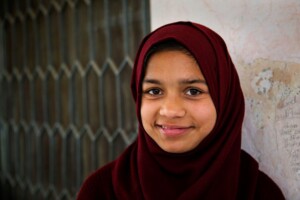Blog
Empowering futures: A milestone in adolescent nutrition
October 4, 2023
Improving global adolescent nutrition can’t wait
On September 8th, Nutrition International and the SUN Civil Society Asia Coordination Group hosted a webinar to discuss the adolescent nutrition agenda in the context of COVID-19 and beyond.
Posted on October 15, 2020

COVID-19 has jeopardized the wellbeing of adolescents around the world, who despite forming one sixth of the world’s population, remain largely overlooked in many countries. School closures and disrupted health services have compromised adolescent health and nutrition, with nutrition initiatives like school feeding programs and weekly iron and folic acid supplementation (WIFAS) impacted.
On September 8th, Nutrition International and the SUN Civil Society Asia Coordination Group hosted a webinar to discuss the adolescent nutrition agenda in the context of COVID-19 and beyond. Reaching more than 600 participants, speakers discussed the global and regional landscape of adolescent nutrition, and shared examples of national strategies that have proven effective.
“With 146 countries closing schools due to COVID-19, 60% of the world’s children are not getting an education – a stark rate that we have not seen since the 1980s,” said Anjali Bhardwaj, Regional Manager, Adolescent and Women’s Health and Nutrition, Nutrition International Asia. “This is a wakeup call for policymakers and experts to devise handy solutions, as we often experience a shutdown during epidemics. ‘Health’ cannot be seen in isolation from ‘nutrition,’ more so in the current times and nutrition literacy is definitely the need of the hour.”
In Indonesia, one in four adolescent girls is anaemic. To address this public health issue, the Ministry of Health used to reach almost 81% of adolescents with WIFAS distributed through schools. However, because of the pandemic, the government is now adapting the program to allow for continued distribution of the supplements.
“Through constant advocacy by development agencies, WIFAS was revived,” said Eriana Asri, Adolescent Nutrition Advisory for the Better Alleviation for Stunting in Indonesia project, Nutrition International Indonesia. “Adolescent girls were reached at their residences by village health workers and teachers to deliver iron tablets. While some schools distributed tablets before the lockdown, in many areas, community-based platforms were utilized. To monitor compliance, the Ministry of Health is also developing a reporting application.”
Pakistan also has high rates of adolescent anaemia. Dr. Khawaja Masuood Ahmed, National Coordinator Nutrition and National Fortification Alliance, Ministry of National Health Services, Regulations & Coordination, Government of Pakistan, laid out the measures adopted by the government to prioritize adolescent nutrition.
“Almost 50% of our adolescent girls are anaemic. We have established a multisectoral platform to develop health guidelines for adolescents and shall soon be working with the National Health Task Force on a large-scale plan to adopt the 1000+ Days approach for adolescents,” said Dr. Khawaja.
Dr. Khawaja also recognized the critical work of Nutrition International, UNICEF and GAIN in supporting the government’s work to develop nutrition strategies, generate local evidence, pilot WIFAS in schools, integrate the Health & Education departments, and generate awareness about anaemia in the community.
Tomoko Nishimoto, Regional Director, Nutrition International Asia, concluded the webinar by calling for nutrition to be a priority in the COVID-19 response.
“Every day counts, more so during adolescence, which is the most rapid and formative phase of human development after childhood,” said Ms. Nishimoto. “Nutrition must be integrated into every phase of the pandemic response, from the immediate responses and the recovery, as well as the resilience building. To recover from the pandemic’s devastating effects, low-cost impactful nutrition interventions that Indonesia and Pakistan have showcased should be brought to the forefront of resource allocation discussion.”